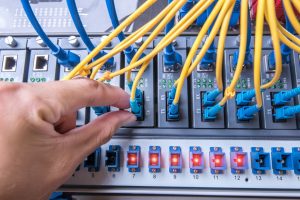There are different things that might go wrong on your construction site. Pilferage of construction items and accidents are some of the main issues that might call for the installation of security cameras on your site.
Other than these issues, you might install the cameras to monitor the progress of your building project. This negates the need for your physical presence and makes the project monitoring convenient. To meet these needs, construction site security systems, such as CCTVs, are the ideal solution.
This is because ordinary cameras will not handle the orientation of the construction site. The lack of power and internet connectivity on temporary construction sites also make ordinary security cameras a non-viable solution.
Here are some of the power options available for portable cameras for your construction site.
Batteries
Different battery cells can be used for portable cameras, including lead-acid (sealed and maintenance-free) and nickel cadmium (Ni-Cad). Both batteries have high current availability, long service life, and constant voltage.
The cells can be recharged or replaced after the completion of their power cycle, which is generally 8–24 hours. You can combine the battery power with an AC-power alternative to provide backup power before the recharging or replacement of your batteries.
Solar Power
In remote locations, solar power is the best choice. The photovoltaic solar unit installed in your portable security camera generates power through the conversion of solar energy.
In most cases, solar-powered cameras have batteries for backup power. This enables the camera to continue operating in cloudy weather, and during the night, late evenings and early mornings.
Power over the Ethernet (PoE)
 This technology allows your camera to get data and power simultaneously from an Ethernet cable. This makes PoE one of the most convenient and flexible power options for portable cameras.
This technology allows your camera to get data and power simultaneously from an Ethernet cable. This makes PoE one of the most convenient and flexible power options for portable cameras.
There are five classes of Ethernet cables used for compact cameras with maximum power levels ranging from 0.44–12.94 for class zero to above 12.95 for class four. Though mostly used on fixed network cameras, PoE can also be used in pan-and-tilt zoom security cameras.
Powered USB
This option uses high-powered devices to supply power to your security camera. This provides one cable connection point which can be used for standard USB communication while powering your camera.
Powered USB cables come in voltage options of -12V DC, +24V DC and -5V DC at 6A. They are easy to maintain, and their connectors permit hot plugging.
AC/DC Power
This is the most common power option for portable cameras. The camera will come with an AC/DC adapter which meets its power requirements. Standard IP security cameras require 50–300mA of 5–12 VDC for their operation, while NVRs need about 300mA at 12 VDC.
These options make it possible to operate your security camera in the harsh conditions of your construction site. Other than the ideal power solution, ensure you invest in a waterproof camera to survive the rugged and wet conditions of your construction site. It should also have an HD video quality and night vision to guarantee you get quality videos and round-the-clock site surveillance.